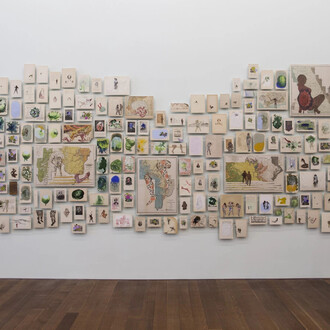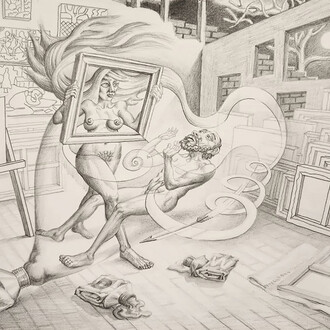The Art Institute of Chicago is pleased to announce an exciting long-term installation that showcases, for the first time in the museum’s history, paintings from 17th through 19th century South America, when much of the continent was under Spanish rule. A Voyage to South America: Andean Art in the Spanish Empire is on display through Feb. 21, 2016, in the second-floor paintings and sculpture galleries of the museum.
The new installation, among other projects, realizes the Art Institute's heightened focus on expanding its Latin American holdings and related programs. While the museum has a long tradition of collecting and displaying works from the pre- Hispanic cultures of Latin America, this installation is the first from the Viceregal period.
Organized by Victoria Sancho Lobis, Prince Trust Associate Curator, Department of Prints and Drawings, it was inspired by the presence in Chicago of a major private collection that is among the most important of its kind outside of South America. Paintings and works on paper on loan from Carl and Marilynn Thoma of Chicago make up the core of the installation, supplemented by important loans from the Newberry Library and Denver Art Museum.
The installation provides an introduction to the practice of art and the conditions of life of artists and patrons who lived in the Andean region of South America during the 17th, 18th, and 19th centuries. The works on display include representations of identified sitters, signal works by important South American artists, devotional paintings that include historical figures, and maps of the region. Together, they bring to life the culture and artistic production in the region as European conventions combined with indigenous traditions.
A Voyage to South America examines the themes of exploration and discovery. The biography of Antonio de Ulloa (1716–95), a Spanish naval officer and cartographer who traveled to South America in the 1730s and 1740s, serves as a metaphorical guide to the group of works assembled. The paintings help illustrate Ulloa’s path through much of what is today Colombia, Ecuador, Peru, and Bolivia, providing specific artistic examples of the cultural phenomena he witnessed.
One such painting is Allegory of Faith With Saints Dominic and Peter of Verona and the Donor, Baltasar Francisco Ramos, and His Wife from 1626, an allegorical representation of faith as a figure carrying a cross, flanked by the two saints. Kneeling at the feet of the saints are the lay church leader who commissioned the painting and his wife, both holding rosaries demonstrating their allegiance to the Roman Catholic Church.
Another painting, Our Lady of Cayma, was likely commissioned by curate Juan Domingo Zamácola y Jáuregui to honor his mentor, Monsignor Manuel Abad e Illana, and commemorate the renovation of his parish church, San Miguel of Cayma. The figure of Abad e Illana is in the lower left of the painting, kneeling before Our Lady of Cayma, who appears in front of the beautifully restored white church building.
Among the most distinctive South American painters of the Viceregal period was Andean artist Melchor Pérez Holguín, who was known for creating devotional paintings of both intimate and grand scale. His works, one of which appears in the exhibition, can be identified by a gray palette and characteristically disproportionate representations of the human figure. Holguín and his peers were commissioned by priests and lay officials of the church, political appointees, and wealthy citizens to create devotional paintings. The works were sometimes enhanced in value by the application of gold, and they were often willed to local churches in exchange for alms on the donor’s behalf.
Complements to the installation include bilingual installation graphics, Acoustiguide stops, and a brochure, as well as a special section in the museum’s Closer app featuring slide shows, videos and archival materials.



















